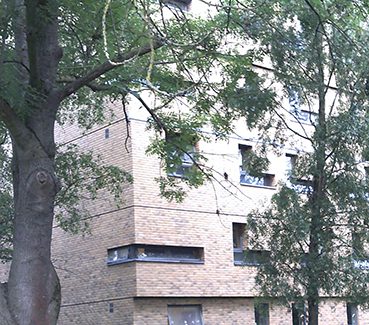‘County lines’ gangs dealing in drugs may be operating on and near the capital’s campuses, according to a report for London Higher, a body that represents London colleges and universities.
Given that London is the UK’s largest city by far, it’s a ‘sad inevitability’, as the report put it, that alongside the culture and vibrancy of London, there’s also crime and risks of criminal exploitation.
Significantly, the study by the Home Office’s Violence and Vulnerability Unit (VVU) suggested that campuses ought to re-name their safety and security teams to include support (as some institutions have been doing, for other reasons, such as to avoid using the word ‘security’ that may be off-putting to students – and their parents). The report pointed to how security officers in HEI-owned halls of residence, or in purpose-built student blocks ‘have an important role to play in spotting signs of county lines exploitations’. A good relationship between ‘front line’ staff such as security and campus support teams and wellbeing services was also described as necessary. The report also suggested that those students involved with ‘county lines’ such be treated with understanding rather than as criminals. Besides, students may be scammed by classmates; and student dealers may sell to other students. International students were highlighted as ‘a particularly vulnerable cohort’.
As the report stated, the capital is home to more than 50 higher education institutions (HEIs) and over 500,000 students. As many young adults live and stay around university campuses and accommodation, that’s not only a ‘potentially lucrative drug market’, in the report’s words, but gives an opportunity for gangs to employ exploitative tactics such as ‘cuckooing’, the taking over of a student’s room to run drugs operations, in return for paying off a debt, or purely thanks to coercion.
Among the report’s recommendations were the reviewing of safeguarding manuals, including drugs policies, to ensure that they contain information and processes on county lines and criminal exploitation of gang members; reviewing of out-of-hours provision, ‘to ensure that sufficient resources are available to respond during flashpoints of county lines’; and reviewing of CCTV with professional and academic services ‘to ensure that hotspots are covered’.
Video
The wearing of body-worn cameras (BWCs) was reported at some institutions, albeit with varying levels of actual use. Automatic Number Plate Recognition (ANPR) as used by some providers was seen as helpful for identifying vehicles that may be linked to county lines and exploitation of young dealers and carriers of drugs. CCTV use was deployed variably across institutions, according to the 21-page report; ‘while some used monitored CCTV and had good coverage, others used an unmonitored CCTV system as a post-hoc tool for investigating reported incidents’. The study also found ‘some issues with known blind-spots in CCTV coverage and cameras being obstructively unclean. This was reported at one institution to reduce feelings of general safety among staff and students.’
The report also covered data (some institutions have on-site access to the Police National Computer (PNC) for their campus police officers and have arranged information sharing protocols with police). Six (unnamed) institutions were surveyed. While the Unit found ‘strong foundations of good practice at each’; those interviewed admitted to ‘limited knowledge of the signs/indicators of county lines’ and a lack of training to spot signs. The report summed up that ‘effective communication, partnerships and welfare provision contribute to enhancing an institution’s ability to respond to county lines and exploitation where they arise’.
What they say
Mark Corbett, Head of Policy and Networks, London Higher said: “This is a ground-breaking study that has been done in this area, and would not have been possible without our six members who agreed to take part. We now have a fuller picture of the understanding of county lines operations across a range of provider types and sizes and geographical locations across London, which will enable institutions to better work with their local stakeholders in addressing this issue.”
Lead of the locality reviews Mick McNally, of the Violence and Vulnerability Unit, said: “Working with London Higher and the six universities who recognised the need to further improve their understanding and safeguarding response to this growing county line and criminal exploitation issue in London and across the UK has been a privilege. The recognition that the student population is also at risk from this growing criminal business model that focuses on exploitation and the targeting of vulnerable people is the first step to dealing with it effectively. It’s not hidden, we are just not looking.“
You can download the document at the London Higher website.
Photo by Mark Rowe.










